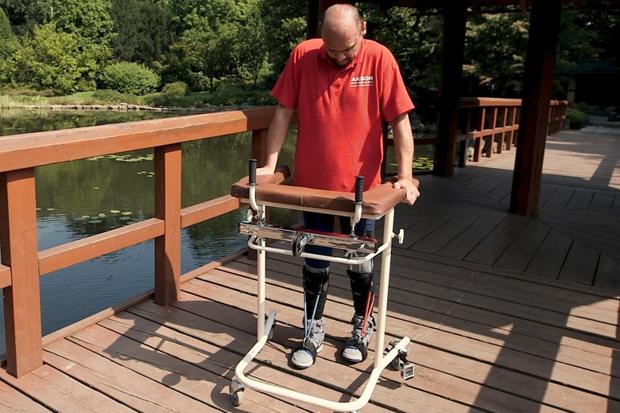Darek Fidyka: Paralyzed man walk again after transplantation of olfactory ensheathing cells
Darek Fidyka, who was paralyzed for four years, has been able to walk again after a pioneering therapy that involved transplanting cells from his nasal cavity into his spinal cord.
Darek Fidyka, who was paralyzed from the chest down in a knife attack in 2010, can now walk using a frame.
The treatment, a world first, was carried out by surgeons in Poland in collaboration with scientists in London.
Details of the research are published in the journal Cell Transplantation.
Darek Fidyka, 40, was paralysed after being stabbed repeatedly in the back in the 2010 attack.
He said walking again – with the support of a frame – was “an incredible feeling”, adding: “When you can’t feel almost half your body, you are helpless, but when it starts coming back it’s like you were born again.”

Darek Fidyka, who was paralyzed from the chest down in a knife attack in 2010, can now walk using a frame
Prof. Geoff Raisman, chair of neural regeneration at University College London’s Institute of Neurology, led the UK research team.
He said what had been achieved was “more impressive than man walking on the moon”.
The treatment used olfactory ensheathing cells (OECs) – specialist cells that form part of the sense of smell.
OECs act as pathway cells that enable nerve fibers in the olfactory system to be continually renewed.
In the first of two operations, surgeons removed one of the patient’s olfactory bulbs and grew the cells in culture.
Two weeks later they transplanted the OECs into the spinal cord, which had been cut through in the knife attack apart from a thin strip of scar tissue on the right. They had just a drop of material to work with – about 500,000 cells.
About 100 micro-injections of OECs were made above and below the injury.
Four thin strips of nerve tissue were taken from the patient’s ankle and placed across an 8mm (0.3in) gap on the left side of the cord.
The scientists believe the OECs provided a pathway to enable fibers above and below the injury to reconnect, using the nerve grafts to bridge the gap in the cord.
